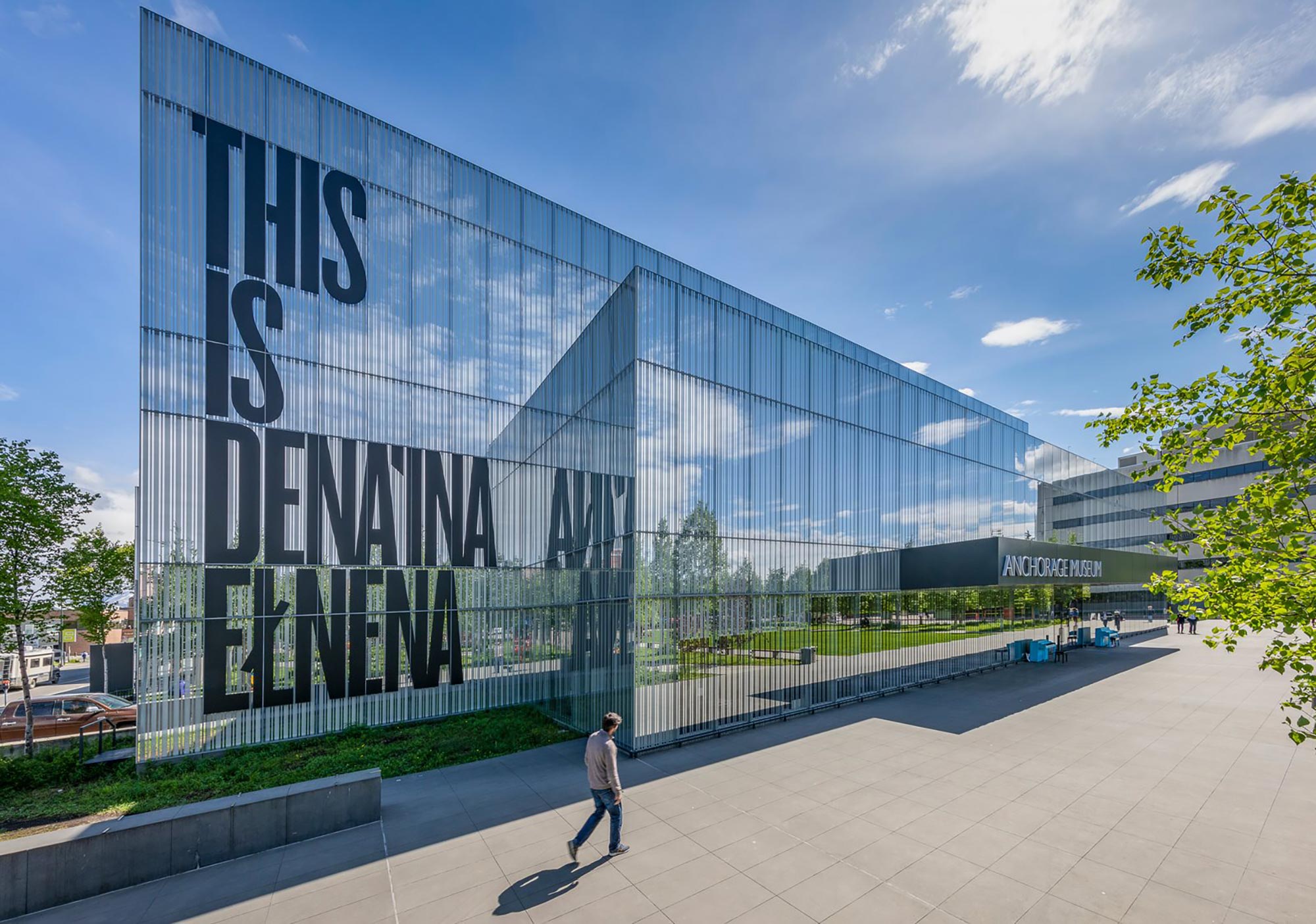



f you have driven past the Anchorage Museum, you may have seen the front of the building with the enormous words, “This is Dena’ina Ełnena.” This is from the Dena’ina language, meaning, “This is Dena’ina homeland.” Years of effort went into bringing this land acknowledgment to the Alaska community.
Before statehood in 1959 and the “purchase” of Alaska in 1867, what is known as the Anchorage area already had a long and rich history. Between the Chugach and Talkeetna mountains, is home to the K’enaht’ana Indigenous people of Nuti (Knik Arm). They are members of the Eklutna (Eydlughet) and Knik (K’enakatnu) Tribes. They have been in the area for at thousands of years.


f you have driven past the Anchorage Museum, you may have seen the front of the building with the enormous words, “This is Dena’ina Ełnena.” This is from the Dena’ina language, meaning, “This is Dena’ina homeland.” Years of effort went into bringing this land acknowledgment to the Alaska community.
Before statehood in 1959 and the “purchase” of Alaska in 1867, what is known as the Anchorage area already had a long and rich history. Between the Chugach and Talkeetna mountains, is home to the K’enaht’ana Indigenous people of Nuti (Knik Arm). They are members of the Eklutna (Eydlughet) and Knik (K’enakatnu) Tribes. They have been in the area for at thousands of years.
While Anchorage and the Southcentral region are the homelands of the Dena’ina people, as recent as 2005, the city didn’t reflect its Native history. In 2006, Cook Inlet Tribal Council (CITC) opened the Nat’uh Service Center. Nat’uh is a Dena’ina Athabascan word meaning “our special place.” It was the first building in Anchorage to have a Dena’ina name.
In 2008, the Dena’ina Civic and Convention Center opened and was named to honor the Dena’ina People. Also, the many meeting spaces have Athabascan names, with Native artwork throughout the building.
Anchorage is the largest Native community in Alaska, and many different cultures are present. But it is on Dena’ina land, and that acknowledgement and knowledge has been long in coming to the wider public.
Today, only a few places have Dena’ina Athabascan names: a handful of buildings and landmarks. Learning the names given by Dena’ina Athabascan people is important for many reasons. For those who are not Alaska Native, there is an opportunity to understand a rich history spanning thousands of years.
Aaron Leggett is Dena’ina Athabascan and works as a special exhibit curator at the Anchorage Museum. In 2018, Leggett was elected President of the Native Village of Eklutna. In the past, he has worked for the Anchorage Historic Preservation Commission as the Dena’ina cultural historian.
Leggett was also an assistant curator of collections and exhibits at the Alaska Native Heritage Center. When he was a young man at the Alaska Native Heritage Center, there was a diverse mix of Native people working there. Many were from other Native villages and communities throughout Alaska. While there, he discovered something surprising.

His experience left an impression. Understanding that so many were unaware of Dena’ina Athabascan people having lived in the area, Leggett was determined to make a difference.
“If someone wanted to learn there were only a couple of artifacts at the Anchorage Museum, or you would have to go to the library to check out books published by anthropologists. I decided that I needed to make it my mission in life to change that.”
At the root of land acknowledgment is recognizing the area’s past. It is a gesture that shows respect and recognition that those who moved here are comparatively recent visitors from elsewhere. When a sign uses the Indigenous name for a river or lake or a building name, it is a tangible reminder that marks a shared effort towards decolonization and equity.
Visit this website to learn what Native territories you’re occupying.
For more information on projects visit, Land Lines and Hghu Hghazdatl: They All Gathered.
For more information about land acknowledgment from the Anchorage Museum, visit here.